– Options
Options
exhibition and performance
commissioned by steirischer herbst and Grazer Kunstverein.
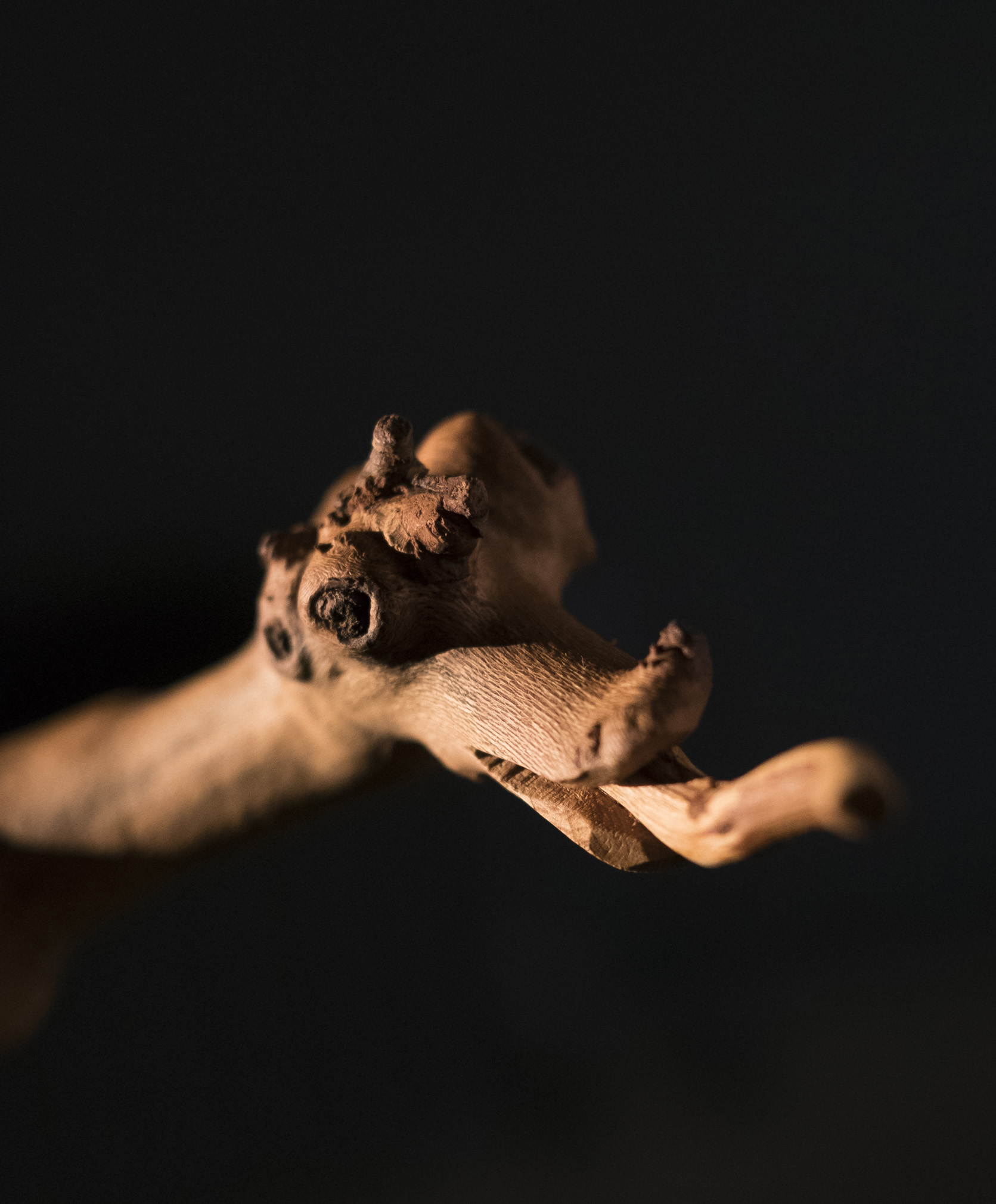
As a research-based body of work, Options takes its cues from the events between 1939 and 1943, when the native German-speaking people of South Tyrol were given the option of either emigrating to neighbouring Nazi Austria (and other Third Reich territories) or remaining in Fascist Italy and being forcibly integrated into the mainstream Italian culture, thereby losing their language and cultural heritage. This system, enforced after an agreement between Mussolini and Hitler, was called the “Option Agreement” (Die Option or Südtiroler Umsiedlung).
This project stems from research into archive and propaganda materials from the era: posters, leaflets, newspaper articles and political pamphlets from and about South Tyrol. Options also addresses the aftermath of the Option Agreement, including episodes of tension, conflict and terrorism between communities in South Tyrol, making use of archival materials and an extensive research in situ, including interviews with historians, activists, politicians, writers and various practitioners.
Taking the South Tyrolean territory and the frontier between Italy and Austria as a case study, Options questions ideas of citizenship, borders, identity, language communities, Heimat, nativism, minority, and migration. The Option Agreement period and its aftermath may serve as a paradigm of how such ideas are constructed, manipulated, instrumentalized, fictionalized and revoked following whims of institutions of power – and of how such ideas result in producing concrete, dramatic and indelible consequences on people.
The project establishes resonances between those ideas – and the way they were used in the linguistic and visual discourse of the Option Agreement period – and the use of the same ideas in contemporary political discourses in Europe. In this sense, Options is not configured as a historical investigation, but as a constellation between two moments in time – as a commentary on today’s European political discourse through the lens of a past event.
The project comprises a book published by Rorhof.
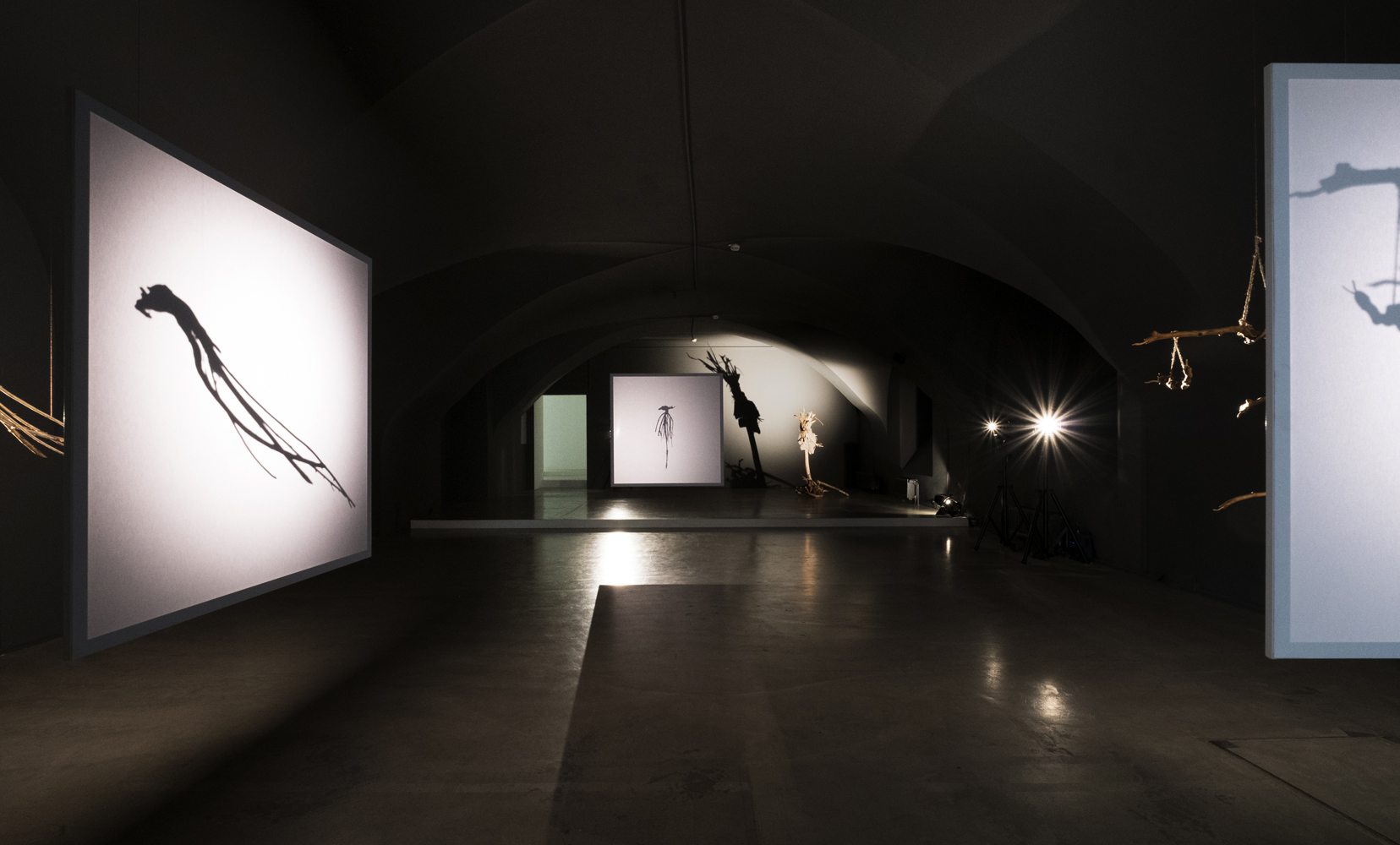
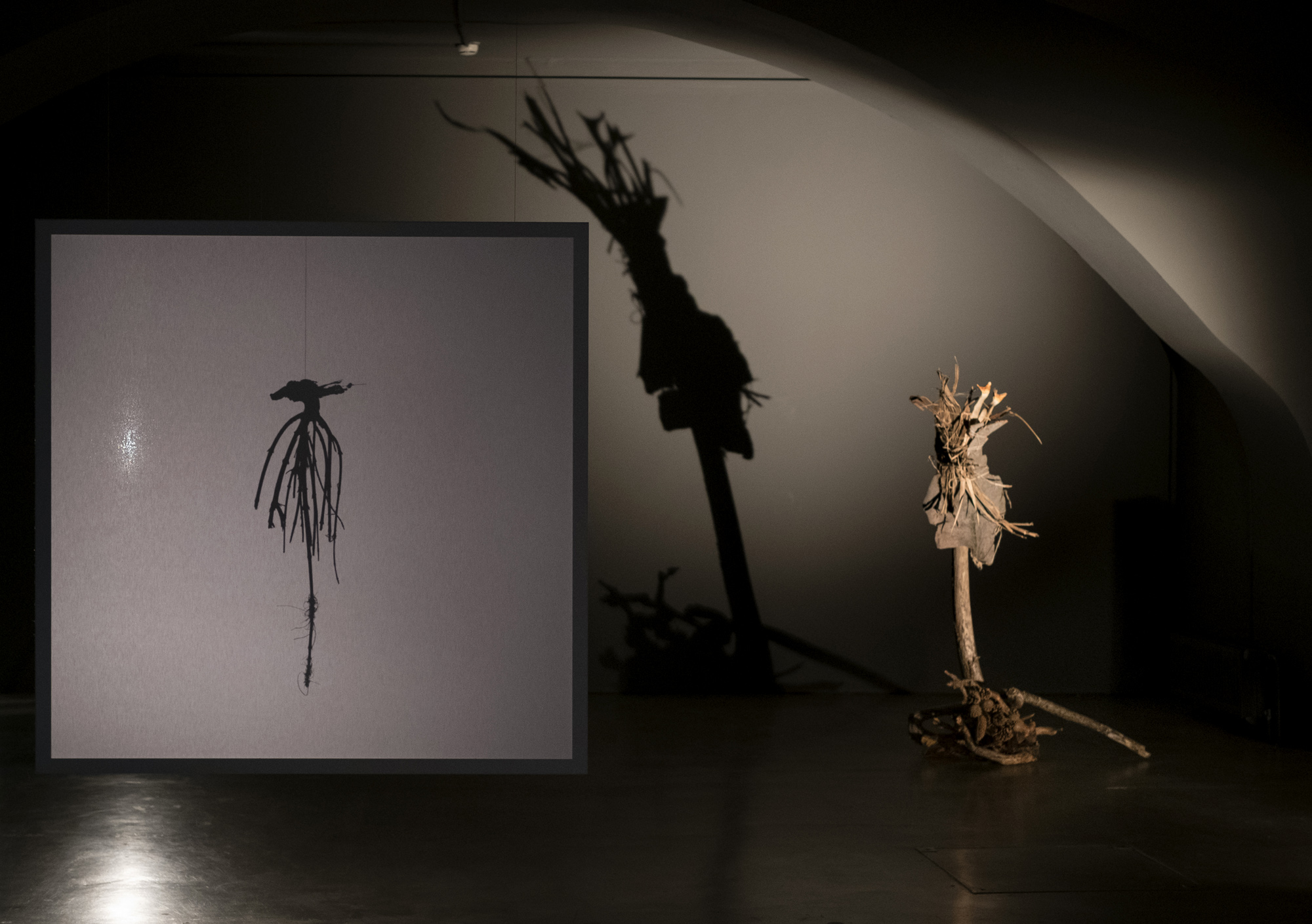
1. Option
An automated shadow play, a looping choreography of sound and light. The audio track is composed of excerpts from letters written to and from South Tyrol in the years 1939 to 1943. Such letters, before being delivered, were opened and translated into Italian by the Fascist Minister of the Interior. Nowadays, such translations are collected in the Central Archives of the Italian State. I have asked a series of South Tyrolean politicians, historians and artists to re-translate such letters into their original language.
As in a radio play, the different voices are arranged into a dramaturgy. The shadows are cast using a set of sculptural objects, specifically built by Colombian sculptor Herlyng Ferla and by the Carlo Colla & Figli Marionette Company. Their wooden forms, something between animal and anthropomorphic, refer both to the Tyrolean woodcarving tradition and to imaginary creatures haunting the legends of the region.
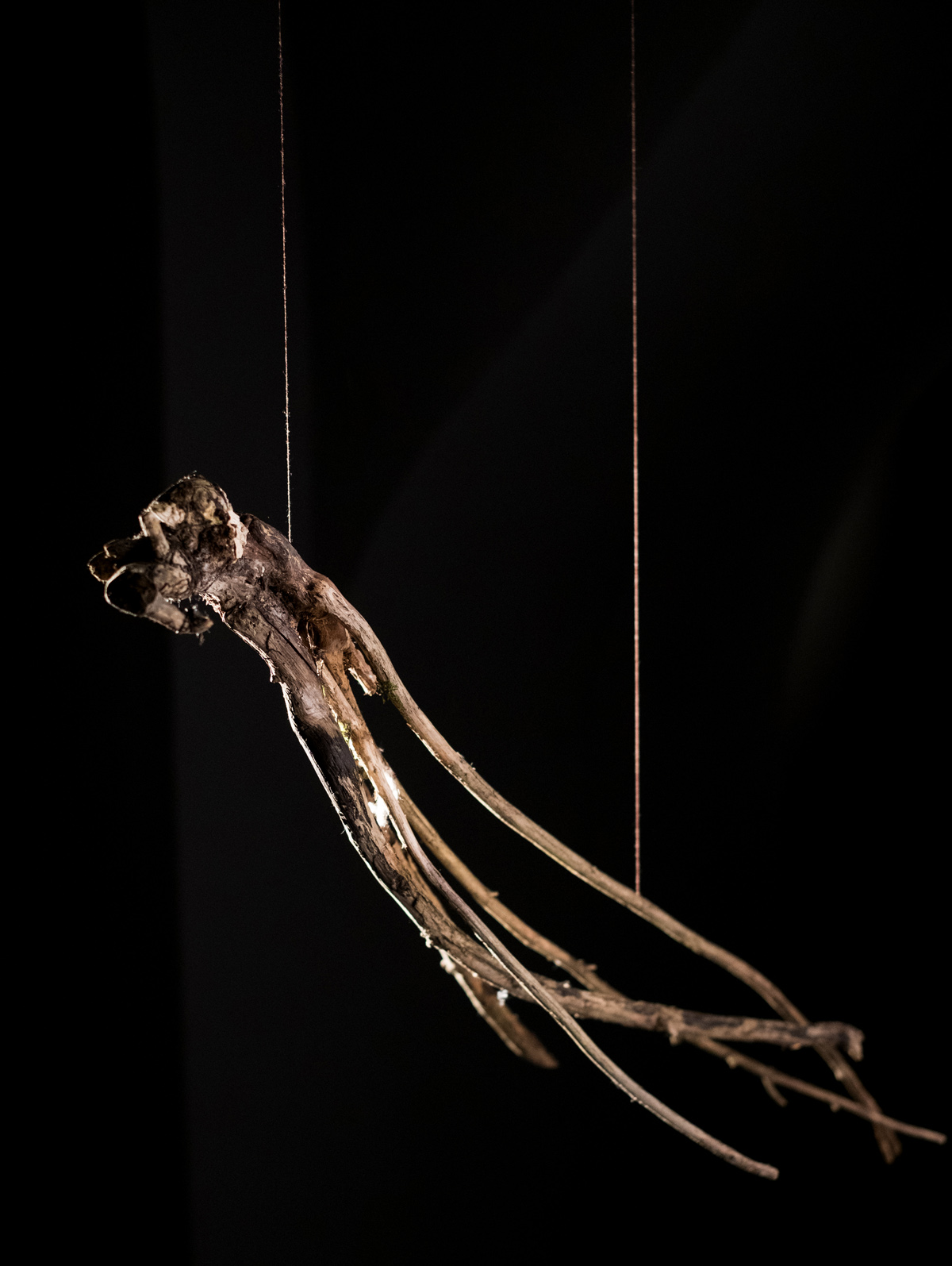
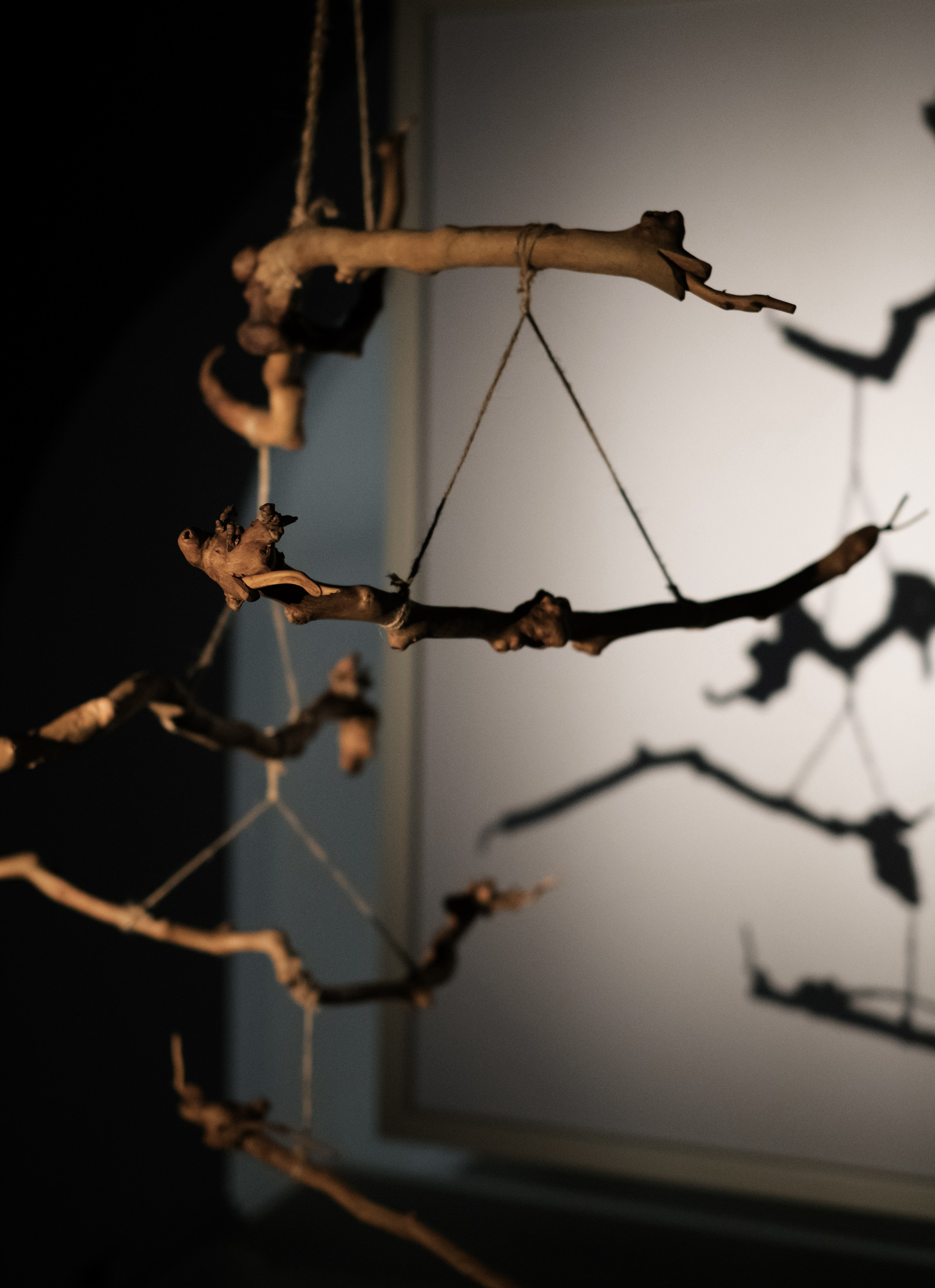
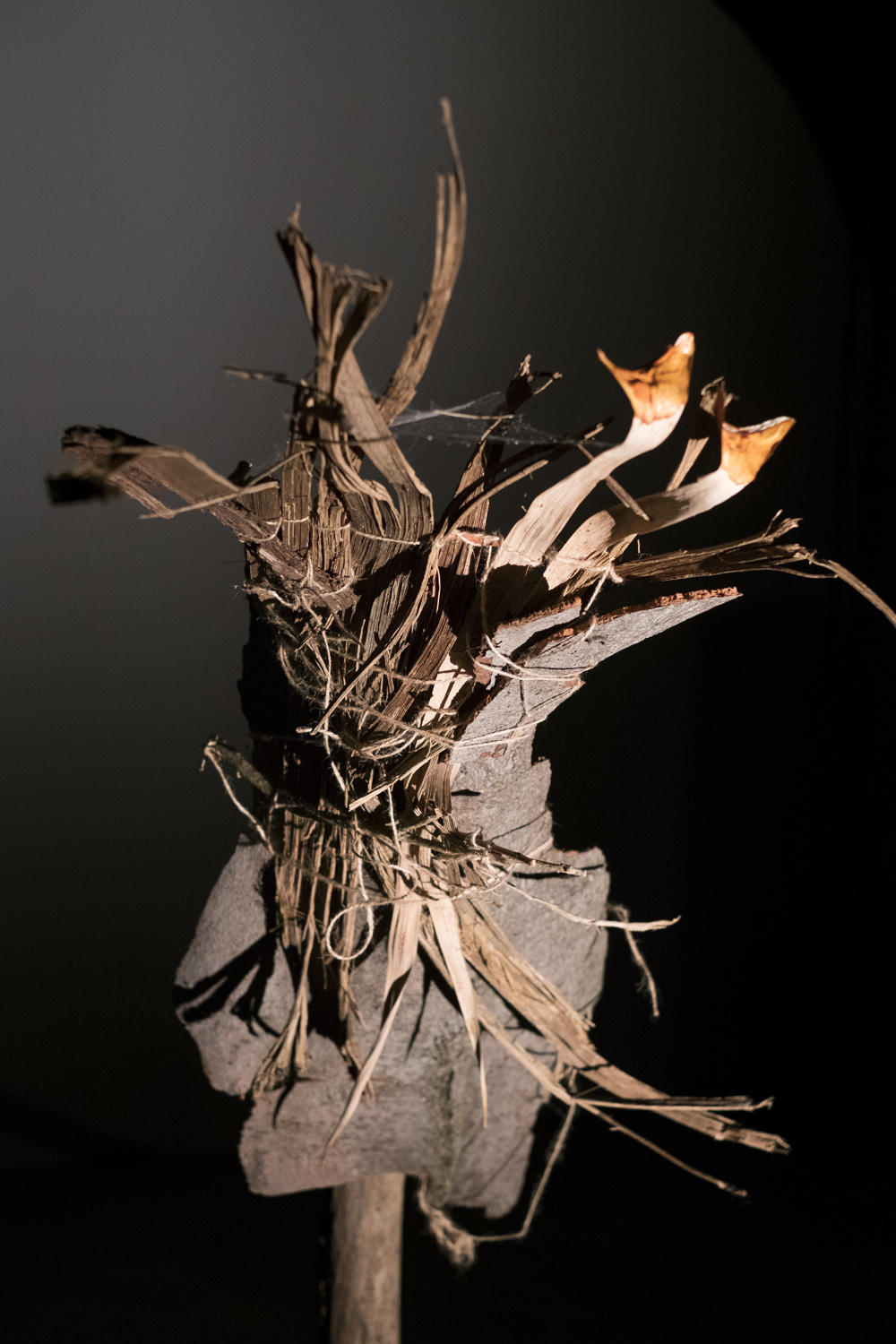
installation view
2. Wappenrolle
A roll of arms: an index of heraldic symbols collected and adapted to create a visual lexicon of fictional icons that take their meaning from graphic imagery and heraldic traditions. Composed of a series of plastic pixels or pieces, the curtain is a visual catalogue of 21 coats of arms, featuring shields of South Tyrolean towns and propaganda symbols from the Option events.
The work is accompanied by a text: a “blazon”, which in heraldic terms indicates a description of a coat of arms from which the reader can reconstruct the appropriate image. In this case, the “blazon” functions as a fragmentary chronology of 21 South Tyrolean events.
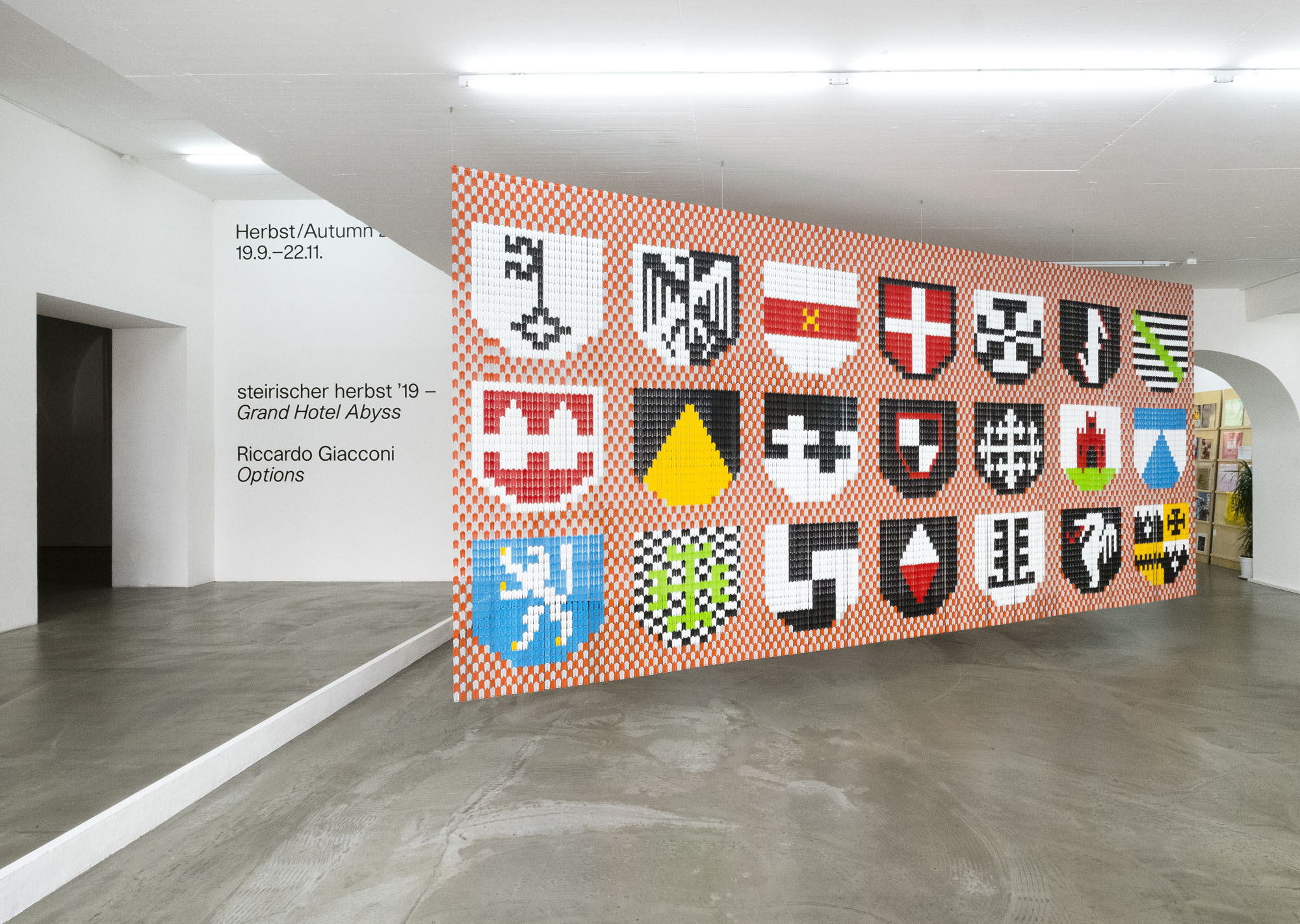
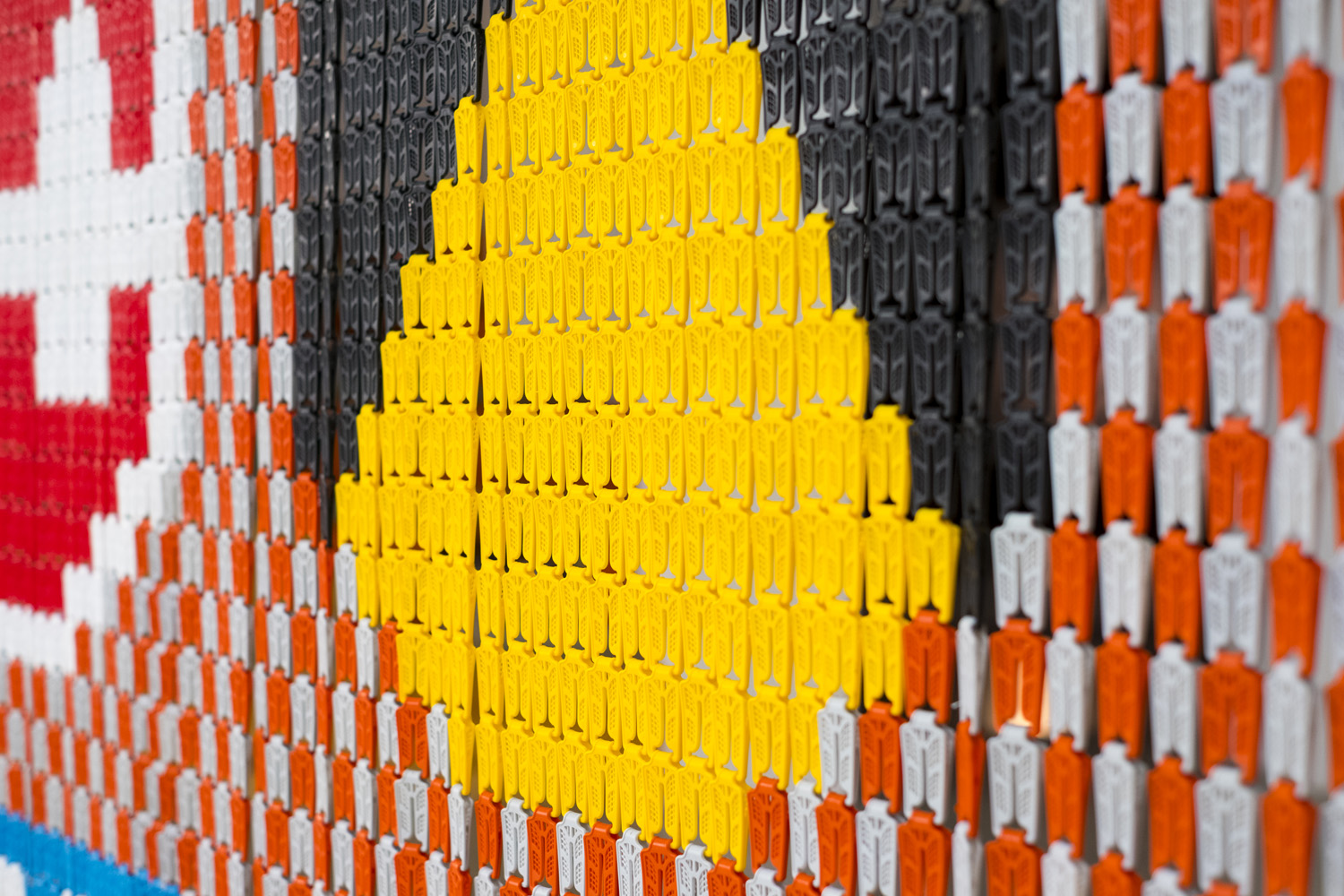
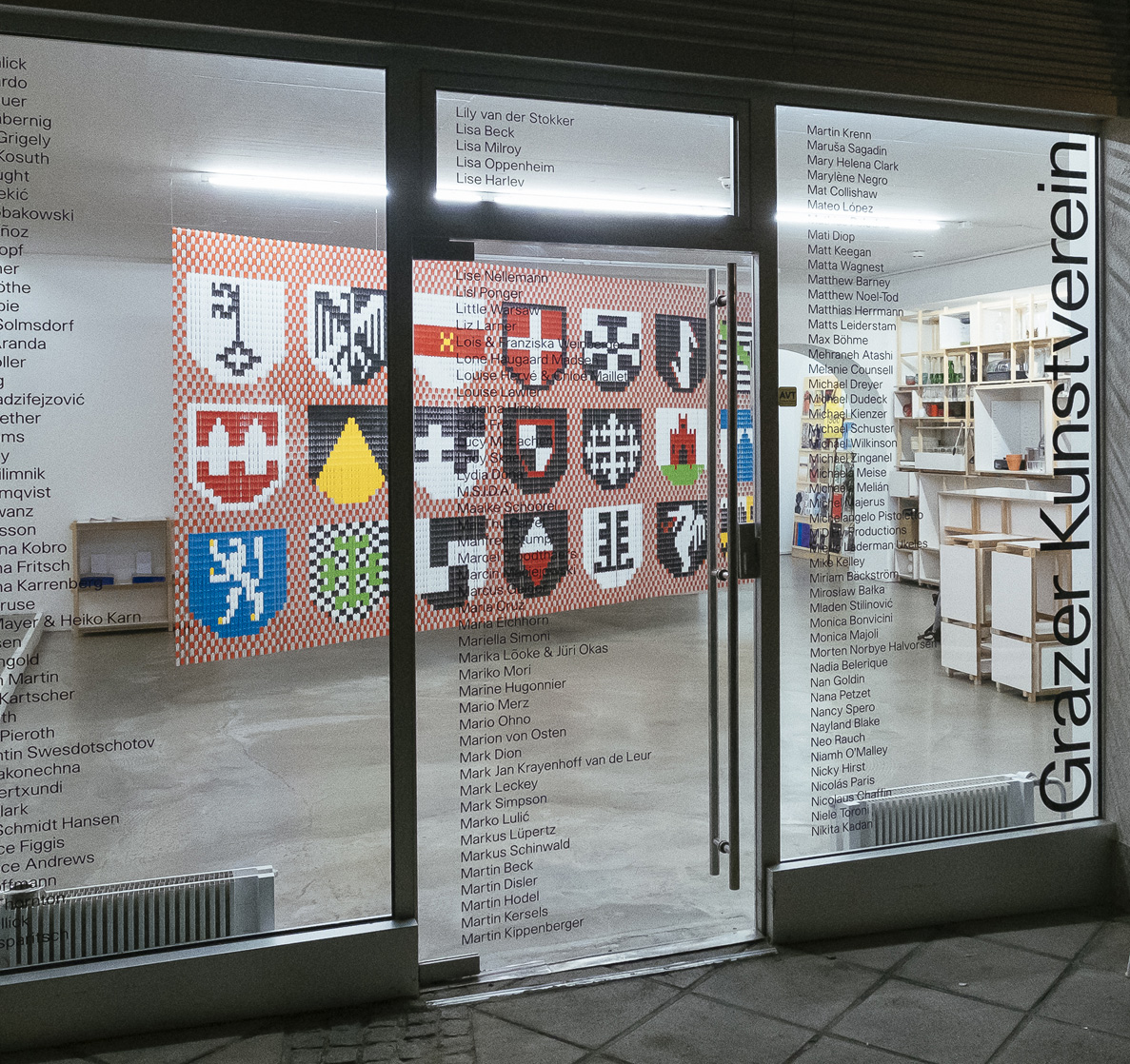
3. Tingierung
A series of seven posters, printed by Litografia La Linterna in Cali, Colombia, using 19th Century letterpress machines. The posters display a series of fictional coats of arms: visual signifiers
presented as elements of a potential heraldry based on the design of Fascist and Nazi propaganda materials related to the Option Agreement.
Coats of arms and heraldry are visual constructions that have been used for centuries to represent an identity and a belonging to specific geographical, social, familiar, military or religious groups. In this series of posters, this coded language is used in order to question concepts such as identity, Heimat and belonging, which were recurrent in the Option-related propaganda and that are recurring in today’s political discourse.
Heraldry, as a symbolic identitarian language, is intrinsically conflictive, relational, political. The posters also include extrapolations of texts from propaganda materials related to the Option Agreement. Through a fictional heraldic symbolism, mimicking the tone of calls to the local population but devoid of indications of a specific ideology, the posters spread clues of an unlocated political vibration.
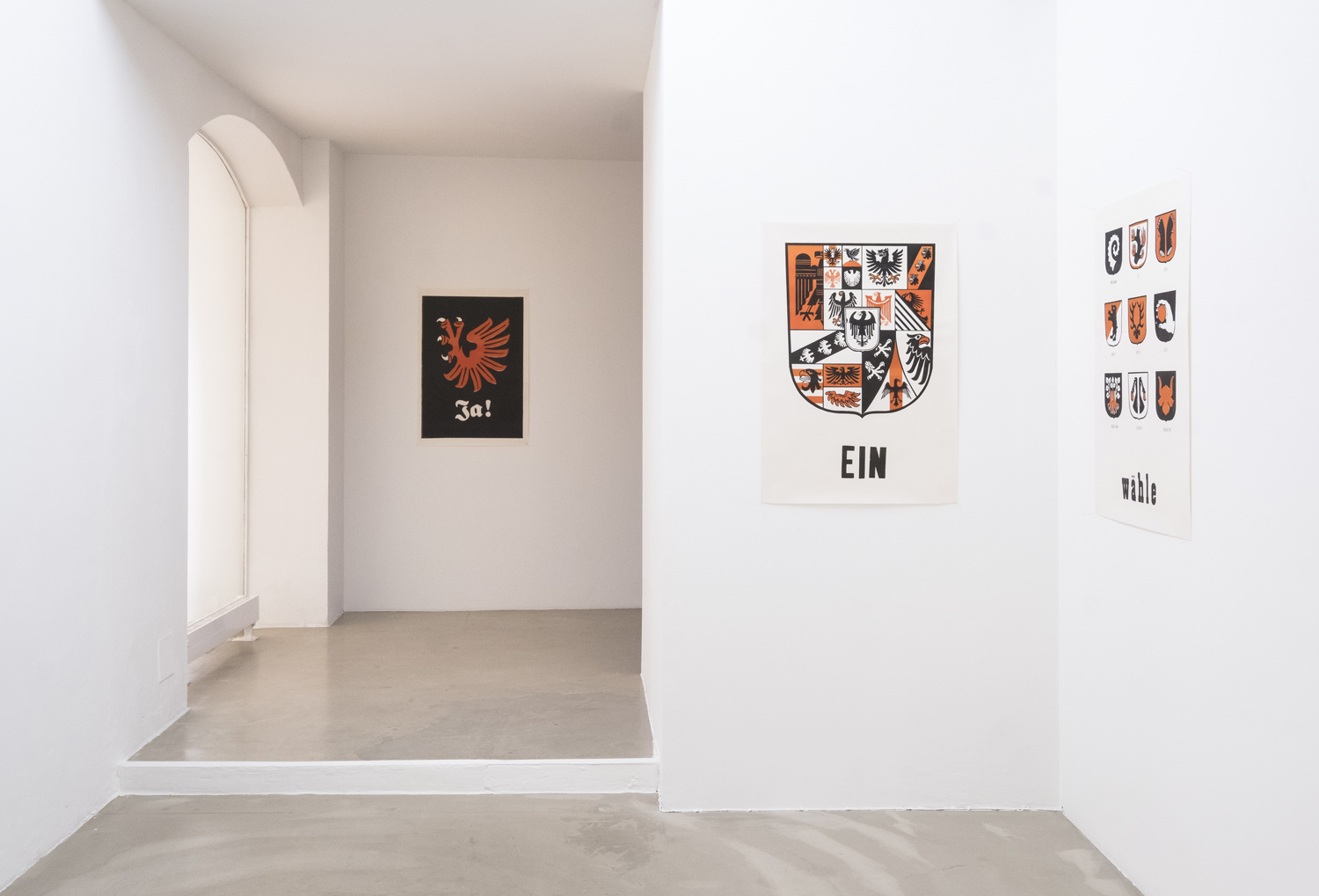
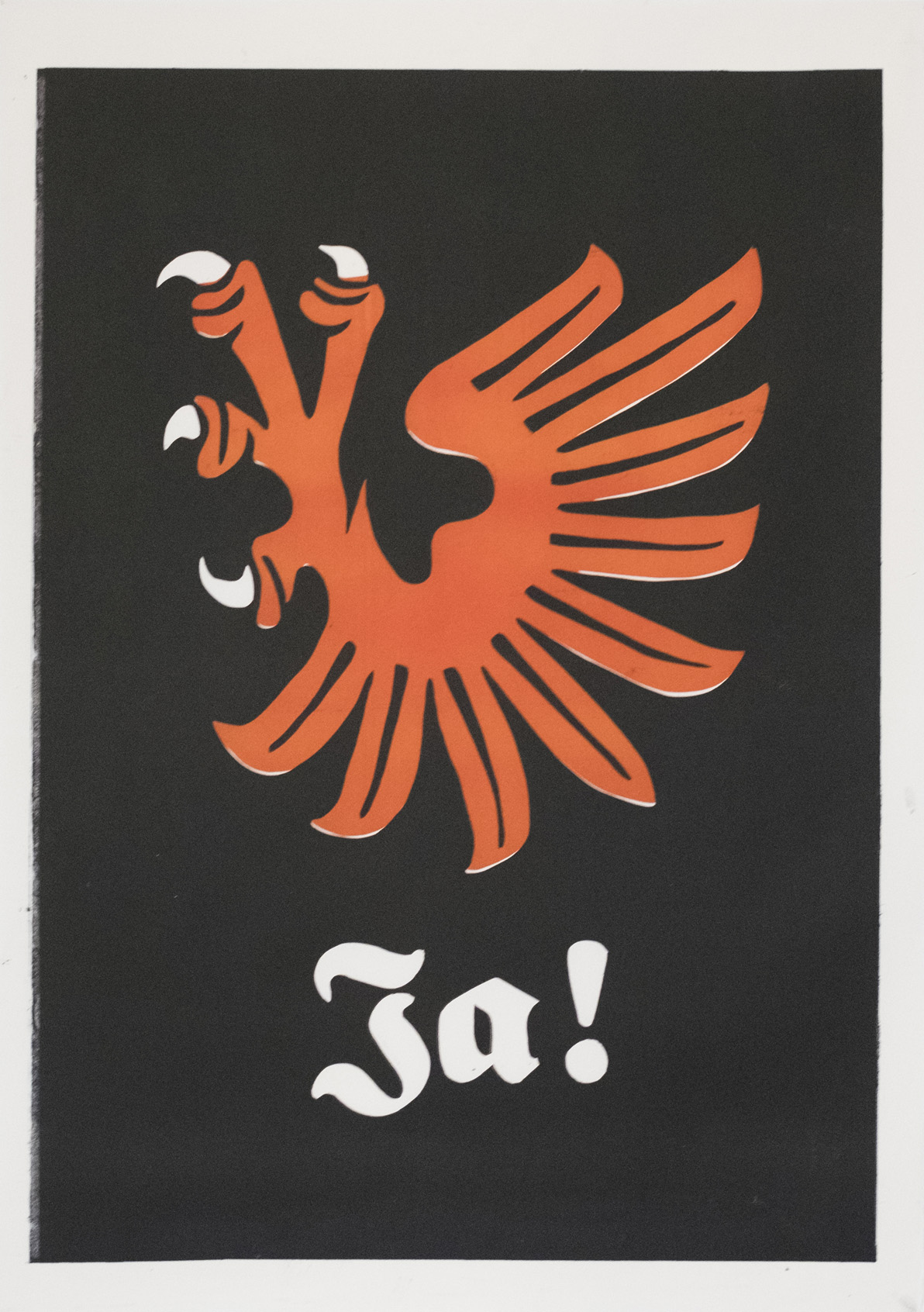
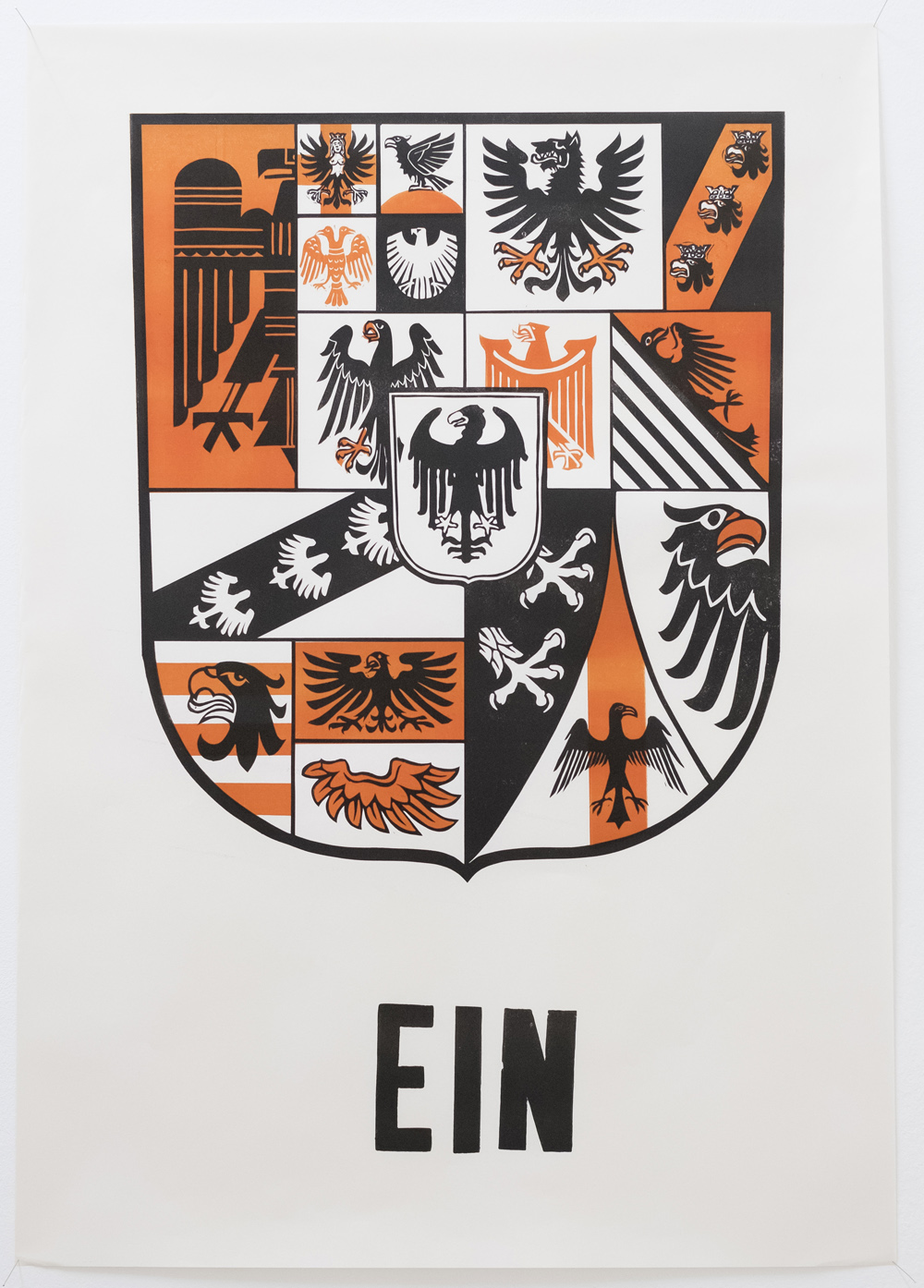
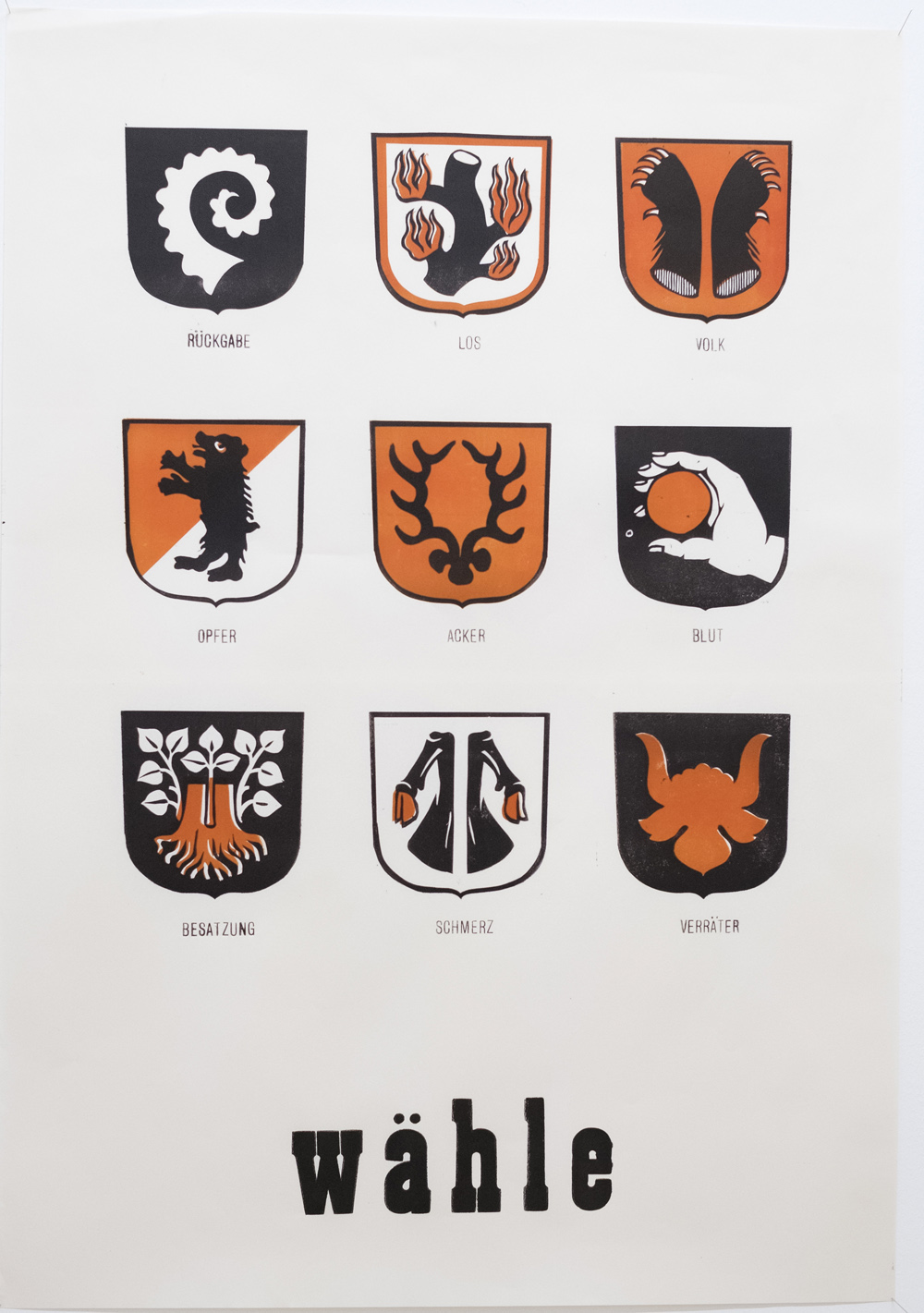
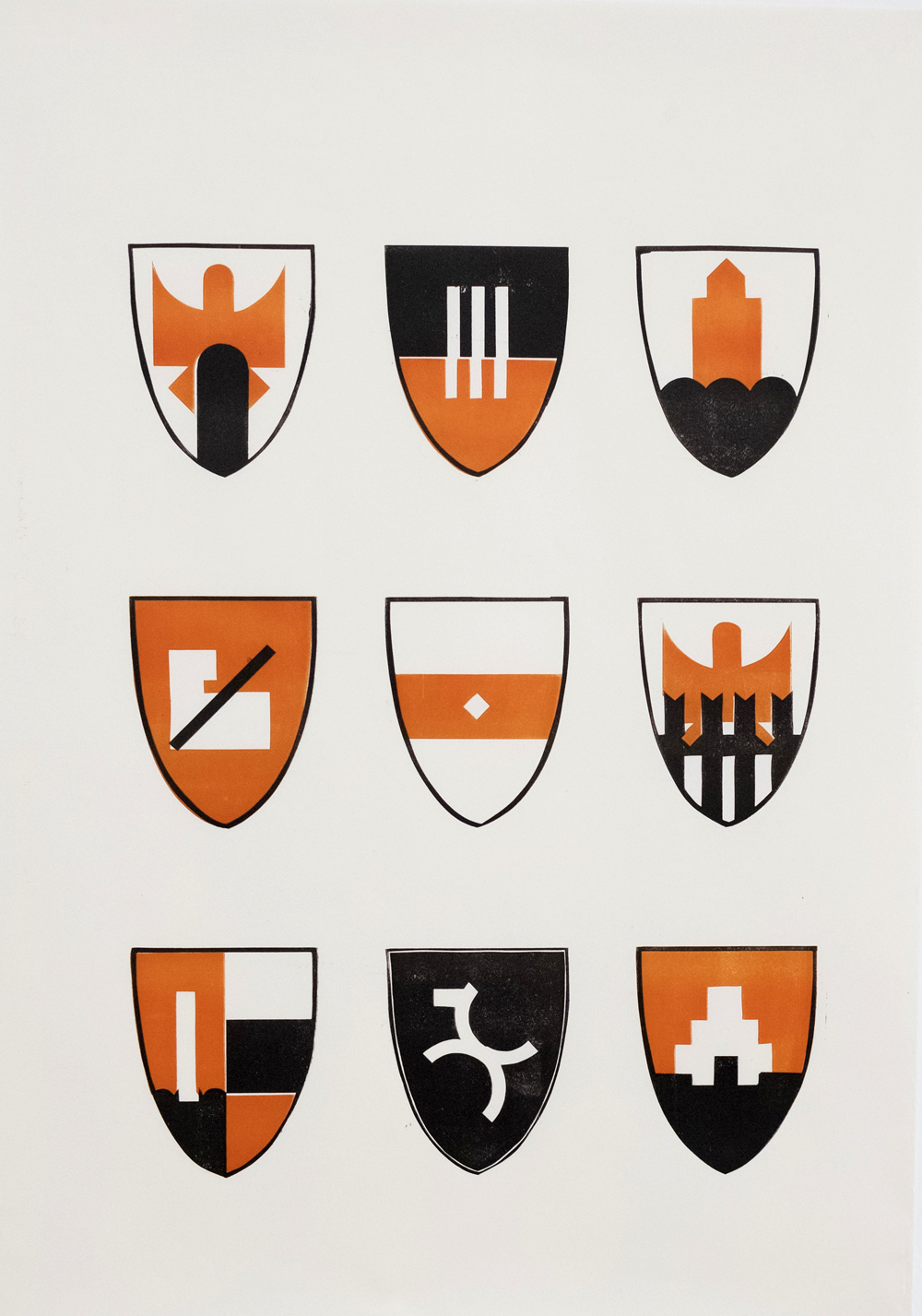
4. Ekphrasis
A mute film is projected on a wall, with a small hole at its center. Composed of a series of photographs from different archives, the film forms a visual study on the history and landscape of the Tyrolean territory.
Behind the wall, inside a dark room there is a beam of ever-changing light and an audio track. The light comes from the video projection in the adjacent room, through a hole in the wall.
As in a session of hypnosis, a voice guides the visitors into a slideshow without images. It describes a series of situations, which listeners are invited to inhabit. Devoid of any references to dates, names or locations, the voice describes a set of images connected to pivotal moments in the conflictual genealogy of the South Tyrolean territory.
installation view
5. Merkblatt
in collaboration with Ronja Mussbacher (performer) and Katja Renzler (textual dramaturgy)
In addition to the exhibition, the project included a performance in Graz’s public space, as part of the opening programme of steirischer herbst ’19. The performance titled Merkblatt (‘leaflet’) took place on 20 September at Schloßberg- platz, consisting of a 13 year old girl shouting a looping series of sentences, a format reminiscent of “newsboys”, young street newspapers vendors.
The text was inspired by a series of 10 “commandments” (Gebote) for “resettlers” (Umsiedler), published in a booklet distributed to South Tyrolean resettlers during the Option period.
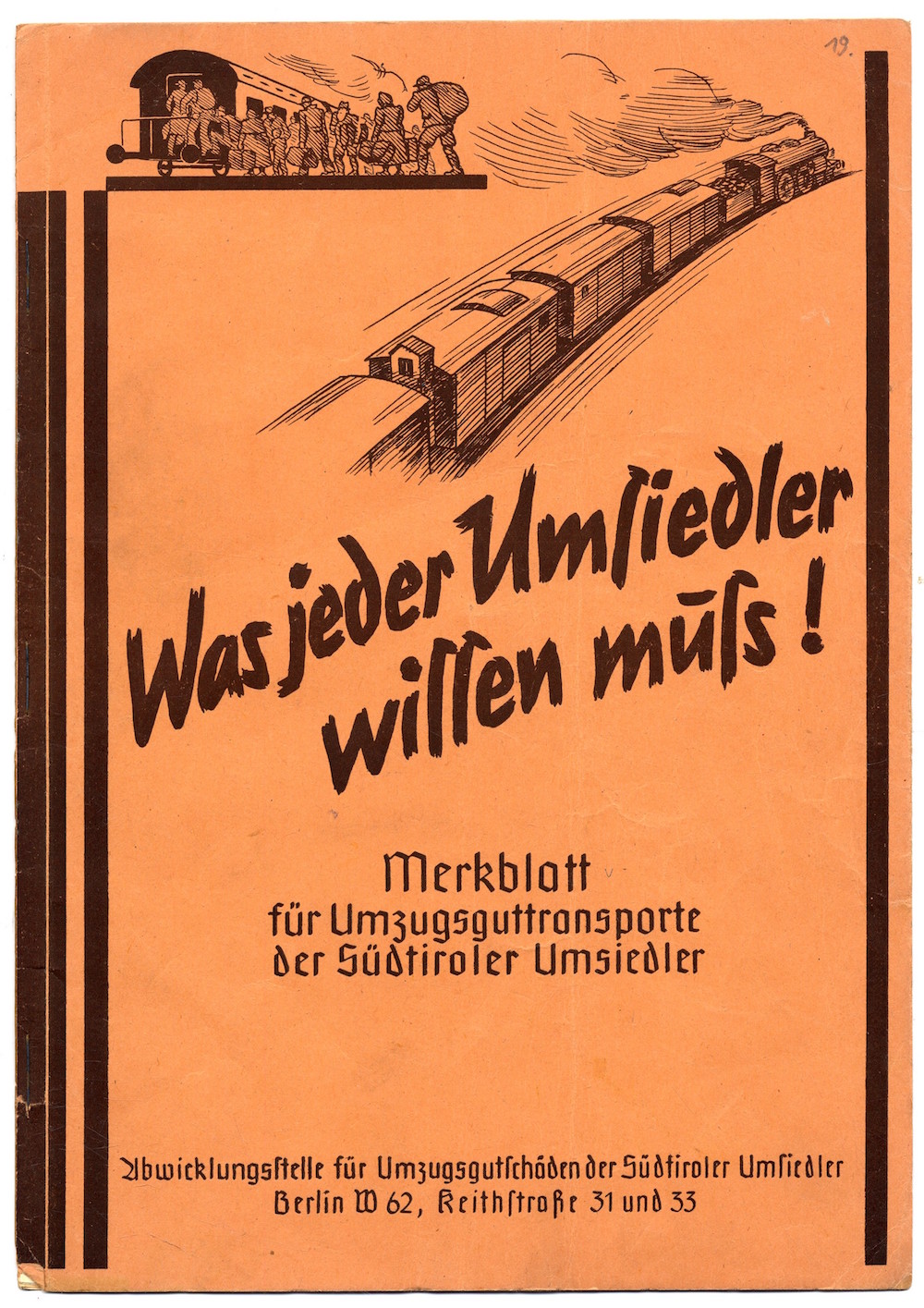
During the performance, the original text was de-constructed: sentences were progressively shuffled, words were altered, and the “commandments” revealed an increasingly ambiguous, absurd, violent character.
A documentation of the performance haunts the basement of Grazer Kunstverein, in the form of a light bulb reacting to the recorded voice of the performer.
installation view
Different versions of the project have been presented at: Kunstpavillon, Innsbruck, Austria; Lentos Kunstmuseum Linz, Austria; Punto de Vista film festival, Pamplona, Spain; Rencontres Internationales Paris/Berlin (2021); New York Film Festival (Currents section); Schloss Tirol – South Tyrolean Museum of Culture and Provincial History; ON – public art project, Bologna (2020), Tre Soldi, RAI Radio 3, Italy (2021).
Project supported by the Directorate-General for Contemporary Creativity by the Italian Ministry of Cultural Heritage and Activities and Tourism under the Italian Council program (2019).
*
Options was developed in collaboration with: Carteles La Linterna (Cali, Colombia), Franco Citterio (Compagnia Marionettistica Carlo Colla & Figli), Anna Fallmann, Herlyng Ferla, Künstlerhaus Büchsenhausen, Giulia Marzin, Katja Renzler, Ronja Mussbacher, Stadtarchiv Innsbruck, Tiroler Landesmuseum, Carolina Valencia Caicedo.
Acknowledgements: Christoph Ampferer, Martina Angelotti, Meinrad Berger, Erica Boito, Nicolò Degiorgis, Riccardo Dello Sbarba, Hannes Egger, Maurizio Ferrandi, Georg Grote, Emanuele Guidi, Tanja Gurke, Franz Haller, Hans Heiss, Eva Klotz, Albert Mayr, Lisa Mazza, Giorgio Mezzalira, Georg Mischì, Renate Mumelter, Lukas Morscher, Hannes Obermair, Günther Pallaver, Eva Pfanzelter, Verena Rastner (ar/ge kunst), Iaco Rigo, Carlo Romeo, Andrei Siclodi, Christina Simmerer, Hilary Solly, Michael Stefaner, Leopold Steurer, Kate Strain (Grazer Kunstverein), Ina Tartler (Vereinigte Bühnen Bozen), Martha Verdorfer.